 |
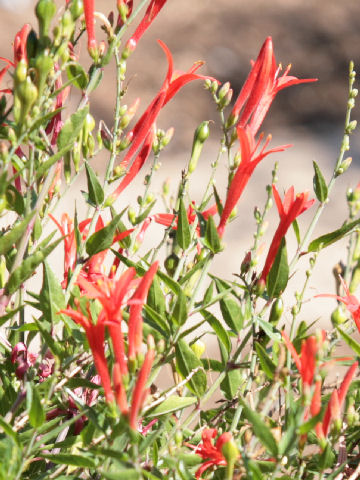

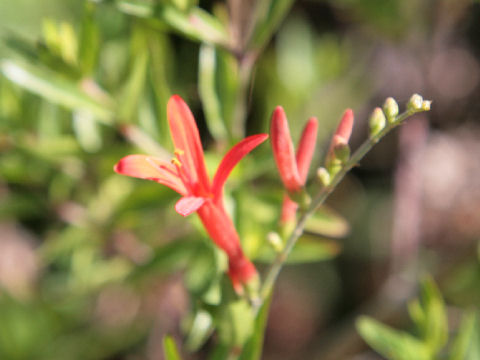

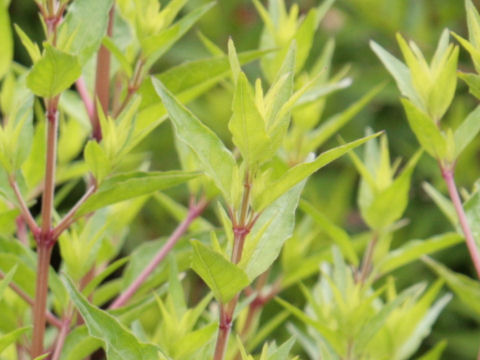

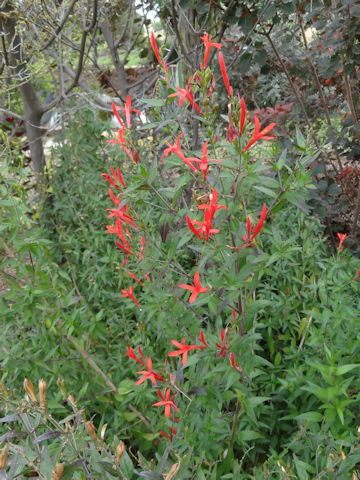

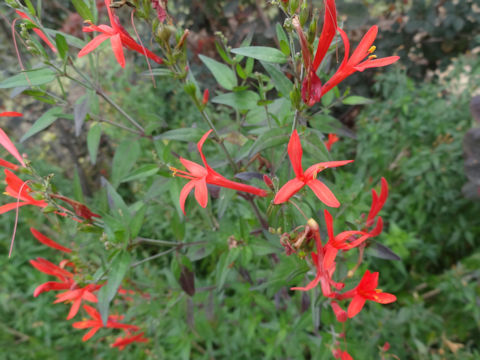

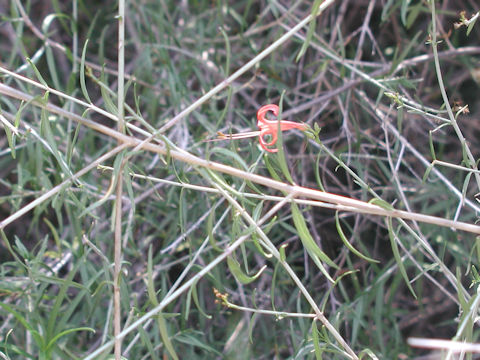

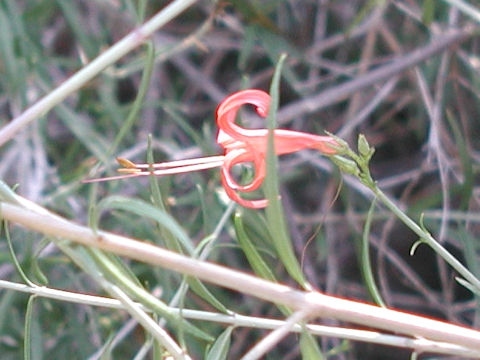

|

|
アメリカの中南部、テキサス州南部からメキシコの北東部に分布しています。渓谷や河岸などに生え、高さは90〜180センチほどになります。葉は披針形で対生し、夏に長い花序をだして、橙赤色の筒状花を咲かせます。花冠の先は4裂し、チョウやハミングバードの吸蜜源となります。写真上・中1〜2は園芸品種の「メキシカンファイアー(cv. Mexican Fire)」。
|

|
キツネノマゴ科アニサカンツス属の落葉小低木で、学名は Anisacanthus quadrifidus var. wrightii。英名は Flame anisacanthus、Desert honeysuckle、Hummingbird bush。
|

|
The Flame anisacanthus (Anisacanthus quadrifidus var. wrightii) belongs to Acanthaceae (the Acanthus family). It is a deciduous shrub that is distributed from the mid-southern United States; southern Texas to north-eastern Mexico. This shrub grows in valleys or along streams, and up to a height of 90-180 cm. The leaves are lanceolate and opposite. The long flowering stalks are borne and bloom orange-red tubular flowers in summer. The flowers have a 4-lobed tips of corolla, and they are a source of honey for butterflies and hummingbirds.
|

|
[上・中1] アメリカ・テキサス州「フォートワース植物園」にて、2006年10月08日撮影。(photo by Jon Suehiro)
[中2] 同上にて、2006年04月29日撮影。(photo by Jon Suehiro)
[中3・中4] アメリカ・テキサス州「ビッグベンド国立公園」にて、2013年09月27日撮影。(photo by Jon Suehiro)
[中5・下] 同上にて、2002年10月22日撮影。(photo by Jouette Travis)
|








